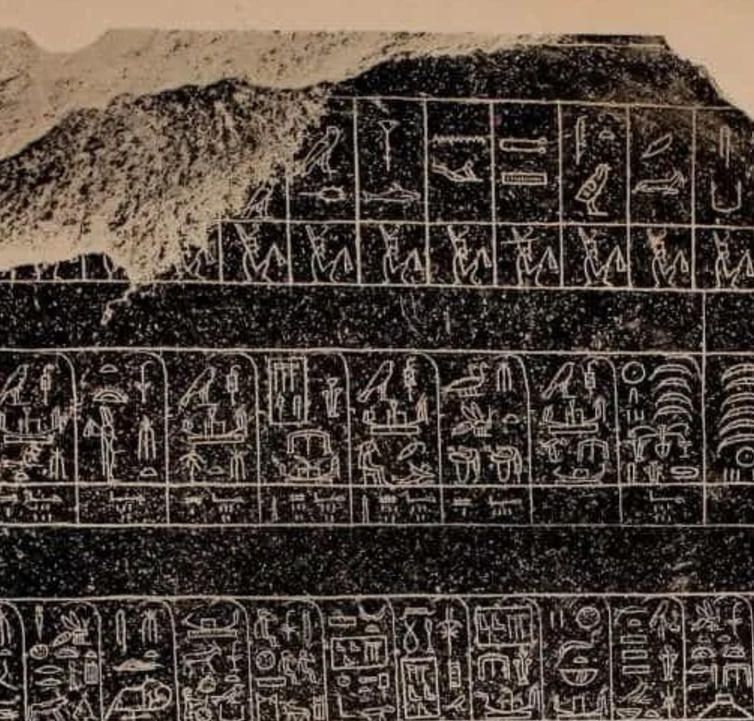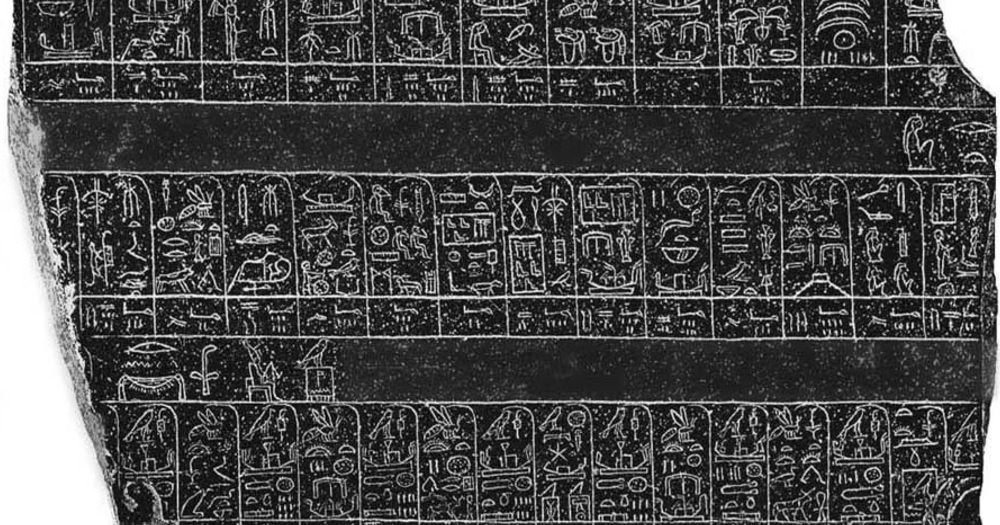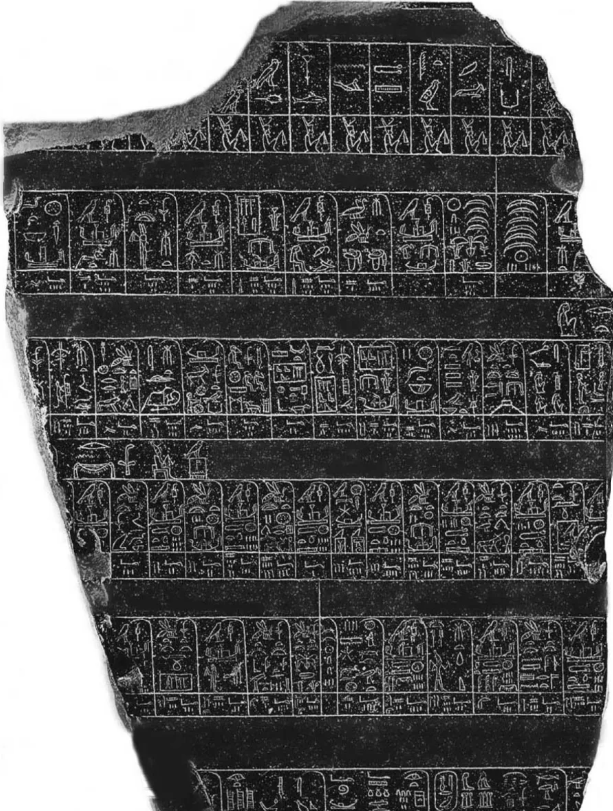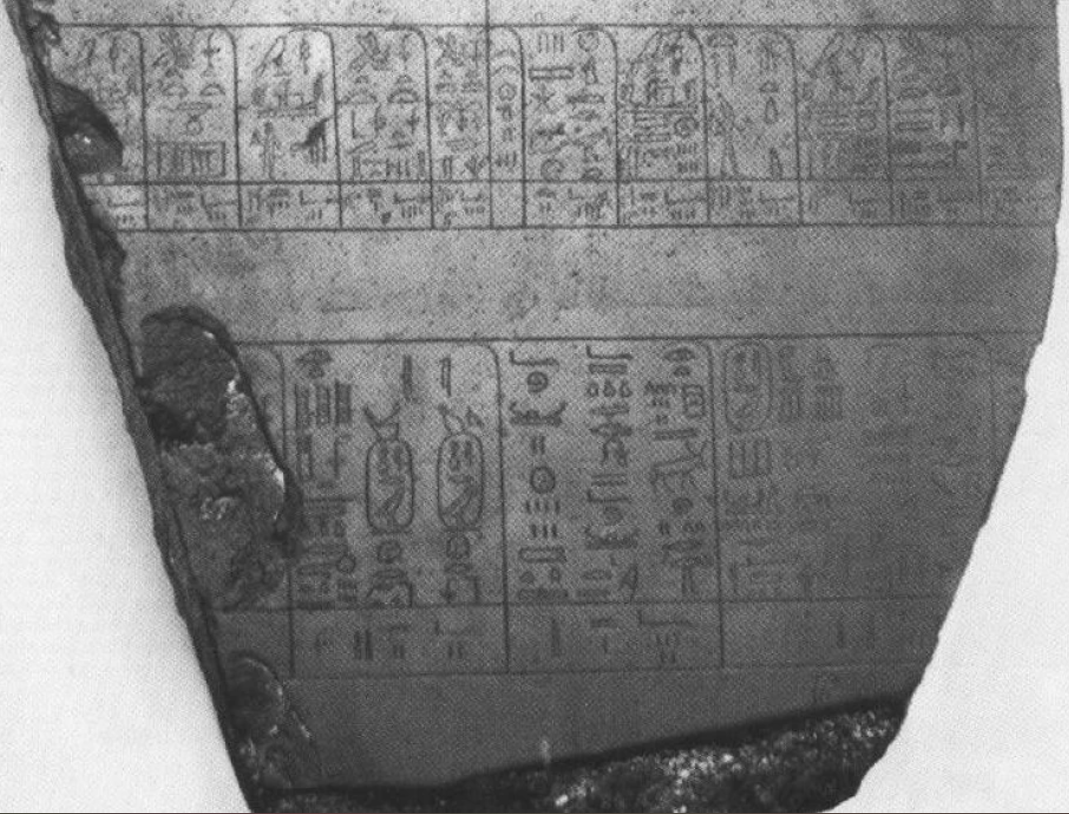The Palermo Stone, an enigmatic artifact from ancient Egypt, is a treasure trove of historical data that offers a glimpse into the lives of Egypt’s first five dynasties (c. 3150–c. 2323 BCE). Despite the mystery surrounding its origins, this relic has been a crucial resource for historians and Egyptologists alike. From its acquisition in the 19th century to its invaluable insights into the Old Kingdom, the Palermo Stone continues to captivate scholars and enthusiasts around the world. Join archeology.dulichvn.net to explore the mysterious artifacts of ancient times.
What Is the Palermo Stone?
A Unique Historical Artifact
The Palermo Stone is a black basalt slab inscribed with hieroglyphic texts. It is one of the most significant records of ancient Egyptian history, detailing events and accomplishments of the kings during the first five dynasties.

Details Engraved on the Stone
The inscriptions on the Palermo Stone chronicle a variety of events, including:
- Royal Family Lineages: Names and achievements of kings and members of the royal family.
- Major Events: Religious rituals, festivals, and construction projects.
- Economic Activities: Details about agricultural yields and tributes collected during the reigns of specific kings.
A Window into the Old Kingdom
This artifact provides a rare look at Egypt’s Old Kingdom, a period known as the “Age of the Pyramids.” The stone’s inscriptions help historians piece together the timeline of rulers and significant events during this foundational era.
See more: Exploring the Enigmatic Abandoned Town of Craco, Italy
The Mystery of the Palermo Stone’s Origins
Unknown Discovery Site
One of the biggest mysteries surrounding the Palermo Stone is its discovery. Historians have no concrete information about where or when the stone was unearthed.

Acquisition by Ferdinand Guidano
The stone first entered recorded history in 1859, when it was purchased by Ferdinand Guidano, an Italian collector. After remaining in his family’s possession for nearly two decades, the stone was gifted to the Palermo Archaeological Museum in 1877.
Significance of the Palermo Stone
A Record of Early Egyptian Dynasties
The Palermo Stone is one of the few artifacts that provides a comprehensive record of Egypt’s early rulers. It includes details about kings who are otherwise not mentioned in other historical sources, offering a broader understanding of Egypt’s early political landscape.

Insight into Religious Practices
The stone sheds light on the religious life of ancient Egypt. It mentions rituals and festivals dedicated to deities, highlighting the importance of religion in shaping the society and governance of the time.
Challenges to Economic and Agricultural Practices
The inscriptions also reveal information about Egypt’s economy, such as the collection of taxes and the measurement of agricultural yields. This insight helps historians understand how the Old Kingdom sustained its massive building projects, including the construction of pyramids.
See more: The Mystery of the Stone Coffin: Unearthing Medieval Secrets Beneath Leicester
The Palermo Stone’s Place in Modern Egyptology
A Tool for Chronology
The Palermo Stone is an essential tool for establishing a chronological framework for the first five dynasties. By cross-referencing its records with other artifacts and texts, Egyptologists have been able to refine the timeline of ancient Egypt.

Comparative Analysis with Other Artifacts
The stone is often studied alongside other ancient Egyptian artifacts, such as the Turin King List and the Abydos King List. Together, these sources help to corroborate and expand our knowledge of early Egyptian history.
The Palermo Stone Today
Preservation at the Palermo Archaeological Museum
The Palermo Stone remains on display at the Palermo Archaeological Museum in Sicily, Italy. Its placement there ensures its preservation and accessibility for further study.

Fragmentation and Challenges
The Palermo Stone is believed to be part of a larger stele, with other fragments scattered across different locations. This fragmentation poses challenges for researchers attempting to piece together its full story.
Conclusion: A Timeless Record of Ancient Egypt
The Palermo Stone stands as a vital link to the distant past, capturing the essence of a civilization that shaped human history. Its inscriptions, though incomplete, provide an extraordinary window into the lives, beliefs, and achievements of Egypt’s earliest rulers.

CÁC TIN KHÁC
Mark Twain & Olivia Langdon: A 36-Year Love Story Filled with Laughter and Devotion
The Tollund Man: A 2,400-Year-Old Mystery Preserved in a Danish Bog
Skara Brae: Scotland’s Hidden Neolithic Village
Porta Nigra: The Hidden Depths of Trier’s Iconic Roman Gate